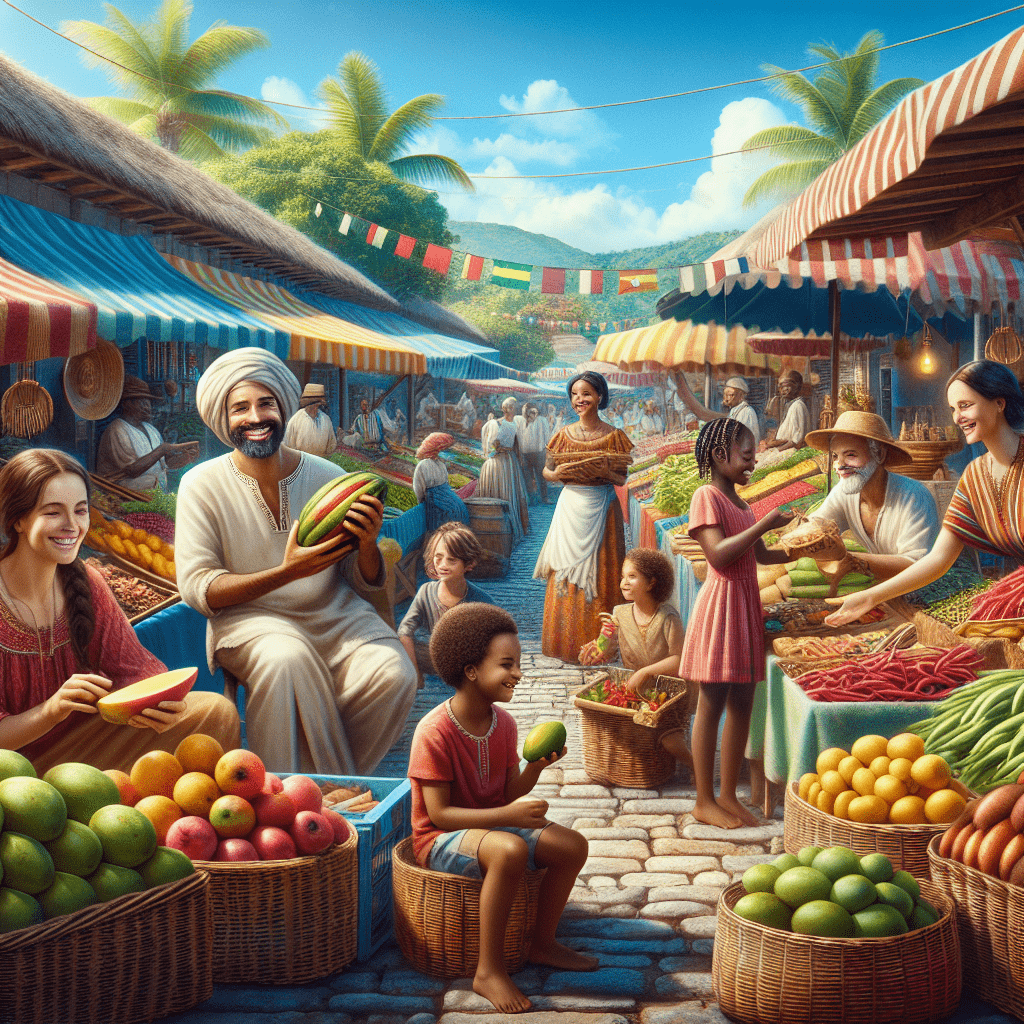The West Indian Market refers to the trading and exchange of goods and services in the countries and regions of the West Indies, which include the Caribbean islands and coastal areas of Central and South America. It is a vibrant and culturally diverse market that has significant importance and relevance both locally and globally.
Historical Background of the West Indian Market
The West Indian Market has its origins in the colonial era when European powers, such as Spain, Britain, France, and the Netherlands, established colonies in the region. The market’s growth and development were heavily influenced by colonialism, as it led to the introduction of new products, trading practices, and economic systems. Over time, the market evolved and transformed, adapting to changes in political, social, and economic landscapes.
Geographical Scope of the West Indian Market
The West Indian Market comprises various countries and regions, including Jamaica, Trinidad and Tobago, Barbados, the Bahamas, and many others. Each of these places contributes to the market’s unique characteristics and cultural diversity. The market is known for its vibrant colors, rich traditions, and diverse ethnic influences.
Products and Commodities in the West Indian Market
The West Indian Market offers a wide range of products, reflecting the region’s rich cultural heritage and natural resources. Traditional and cultural goods include spices and seasonings, handicrafts, artisanal products, and traditional clothing and textiles. Agricultural and food products such as tropical fruits and vegetables, seafood, fish products, and rum are also prominent. Additionally, modern consumer goods like electronics, fashion, beauty products, and tourism-related services are becoming increasingly popular.
Economic Impact of the West Indian Market
The West Indian Market plays a crucial role in the economic development of the region. It generates employment and income for many individuals, particularly in the tourism, agriculture, and manufacturing sectors. The market’s contribution to national GDPs is significant, as it drives economic growth and supports small-scale businesses. Export and import statistics demonstrate the market’s importance in global trade and commerce.
Cultural Significance of the West Indian Market
The West Indian Market is not only an economic entity but also a cultural hub. It preserves traditional crafts and skills, ensuring their continuity and passing down from generation to generation. The market also promotes cultural identity and heritage, as it showcases the unique traditions, customs, and artistic expressions of the West Indian people. Furthermore, the market fosters intercultural exchange and understanding, creating a platform for individuals from different backgrounds to connect and appreciate each other’s cultures.
Challenges and Opportunities in the West Indian Market
While the West Indian Market offers numerous opportunities, it also faces several challenges. Global markets pose competition, requiring the market to constantly innovate and adapt to changing consumer preferences. Infrastructure and logistics limitations can hinder the market’s growth potential, making it crucial to invest in improving transportation and communication networks. Digitalization and e-commerce are vital for the market’s success, as they open up new avenues for trade and reach a wider customer base.
Government Policies and Interventions in the West Indian Market
Governments in the West Indian countries have implemented various policies and interventions to support small-scale entrepreneurs and businesses. They provide financial assistance, training programs, and access to markets to help local enterprises thrive. Trade agreements and regional integration efforts also play a significant role in promoting the market, creating a favorable environment for trade within the region. Furthermore, initiatives focusing on sustainable and ethical practices are gaining importance, ensuring the long-term viability of the market.
Case Studies: Successful West Indian Market Ventures
Several examples of thriving local businesses in the West Indian Market highlight the market’s potential for success. Entrepreneurs and artisans have made significant contributions to the market, showcasing their creativity, craftsmanship, and entrepreneurial spirit. These success stories inspire others and demonstrate the possibilities within the market.
Future Prospects and Growth Potential of the West Indian Market
The West Indian Market has promising future prospects and growth potential. Emerging trends such as eco-tourism, sustainable products, and cultural experiences present new opportunities for businesses and entrepreneurs. The market can expand and diversify further by tapping into niche markets and exploring new export destinations. Collaboration and networking among market participants are essential for maximizing growth and establishing the market’s presence globally.
Conclusion
The West Indian Market is a vibrant and culturally significant entity that offers a wide range of products and services. Its historical background, geographical scope, and economic impact contribute to its importance and relevance. The market’s cultural significance, challenges, and opportunities, along with government interventions, case studies, and future prospects, all highlight the market’s potential for growth and success. It is crucial to support and explore the West Indian Market’s offerings and potential to foster economic development, preserve cultural heritage, and promote intercultural understanding.

